ASUS ROG Ally vs Steam Deck: Tale of the Silicon
The handheld gaming market is witnessing a rapid evolution with new entrants continually upping the ante. Two devices that have recently garnered attention are the ASUS ROG Ally and the Steam Deck. Each has its unique strengths and potential areas for improvement. This article will dive into a comparison of these two handheld gaming devices, quick analyses of their key features, specifications, and overall performance. While this isn’t a review and a recommendation of what to pick, it is up to your discretion if you’re going to use the information we have for you as your reference your purchase decision.
Here is a comparison table that contrasts the ASUS ROG Ally with the Steam Deck:
| Feature | ASUS ROG Ally | Steam Deck |
|---|---|---|
| Processor | AMD Z1(6C/12T) / Z1 Extreme(8C/16T) Zen4 APU 9-30W TDP | Custom AMD Zen2 APU 4C/8T 2.4Ghz- 3.5Ghz 4-15W TDP |
| Cooling | Dual Fans – 30dBa noise at 30W TDP | Single Fan – 38dBa noise at 15W TDP |
| Display | 7″ 1920x1080p 16:9 120Hz IPS Touch | 7″ 1280x800p 16:10 60Hz IPS Touch |
| I/O | XG Mobile Connector USB-C with Display Port support UHS-2 MicroSD Slot(SD, SDXC & SDHC) 3.5mm audio port | USB 3.2 Type C w/ Display Port 1.4 UHS-1 MicroSD Slot (SD, SDXC & SDHC) 3.5mm audio port |
| Security | Fingerprint recognition (Windows Hello) | PIN |
| Size and Weight | 269 x 113 x 39mm 608g (10% lighter) | 298 x 117 x 49mm 669g |
| Sound | Dual speakers with Dolby Atmos and Smart AMP | Dual speakers |
| OS/UI | Windows 11 with Armoury Crate SE | Custom Linux-OS – SteamOS |
| Storage | Up to 512GB Upgradable M.2 SSD – 2230 form factor | Up to 512GB Upgradable M.2 SSD – 2230 form factor |
| Charging | 65W Type-C PD Charging (0-50% in 30mins) | 45W Type-C PD Charging (0-23% in 30mins) |
This table should provide a clear overview of how the two devices stack up against each other in terms of key features and specifications.
Introduction
Handheld PCs have taken a revolutionary turn with two notable players in the industry, ASUS ROG Ally and Valve Steam Deck, leading the forefront of this transformation. This article delves into the intricacies of these devices, scrutinizing their size, screen, audio quality, controls, and many other key elements vital to your purchasing decision.
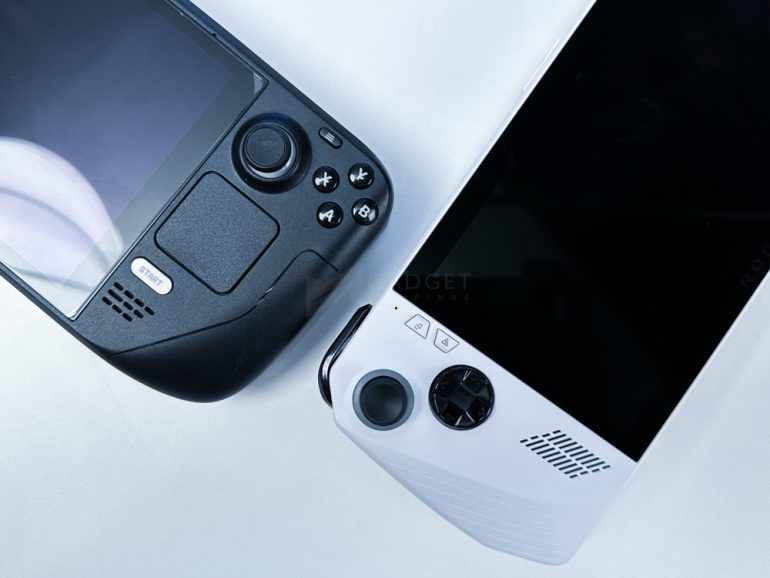
The Steam Deck is not officially available in the Philippines, but stores like DataBlitz and Kimstore are known to be selling it in the country. The ROG Ally will be available in the Philippines, but ASUS has not yet officially announced the on-shelf availability in the Philippines yet.
Size and Design
The Valve Steam Deck may seem slightly overwhelming in size, but it compensates with a generous screen and a comprehensive control scheme. On the other hand, the ASUS ROG Ally, albeit slightly smaller, still maintains a sizeable screen and a well-rounded control layout, making both devices feel somewhat hefty. If the Steam Deck’s size seems too vast, the ROG Ally might be a more suitable fit.
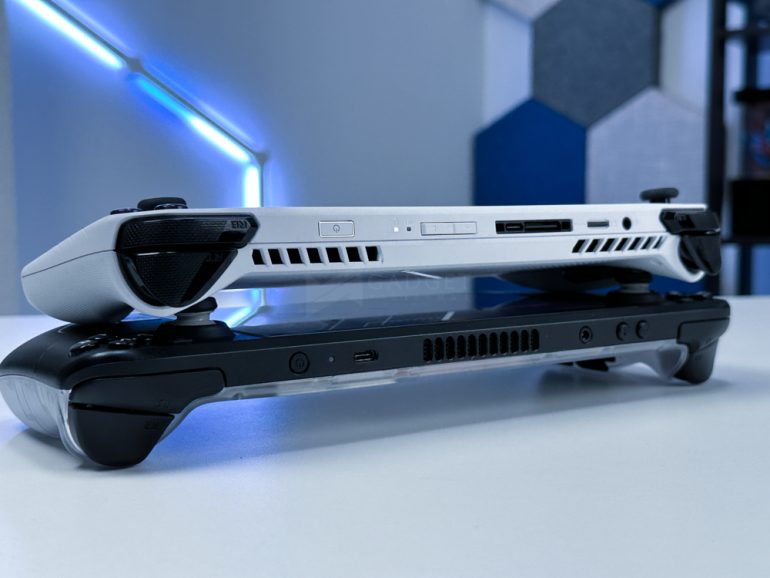
Screen Comparison
Both devices share a seven-inch display, but the similarities end there. The Steam Deck employs a 16:10 aspect ratio, making it slightly taller than the Ally’s 16:9 aspect ratio. Also, the Steam Deck operates with a screen resolution of 800p, while the Ally boasts a 1080p resolution. This discrepancy affects gameplay since some PC games may not natively support 800p, necessitating you to downgrade to 720p on the Steam Deck.
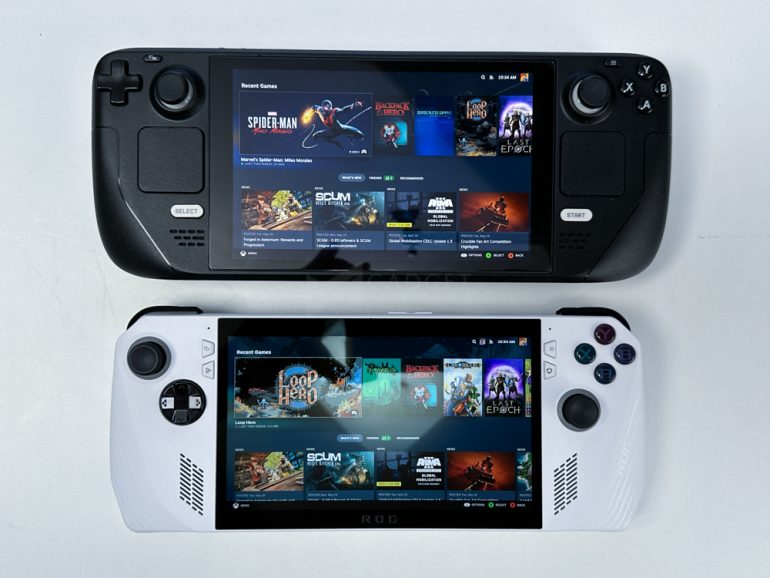
Furthermore, the Steam Deck’s maximum refresh rate is 60Hz, while the Ally offers an unprecedented refresh rate of up to 120Hz for handhelds. In terms of color accuracy, the ROG Ally triumphs with approximately 99% accuracy compared to the Steam Deck’s 80%.
However, since the Steam Deck has a taller screen ratio, some games that use 4:3 ratio will show to be bigger and better, by my standards. So, if you’re into emulating older games that use 4:3 ratio, the Steam Deck is better, but at the expense of lower refresh rate and screen display quality.
Audio Quality and Controls
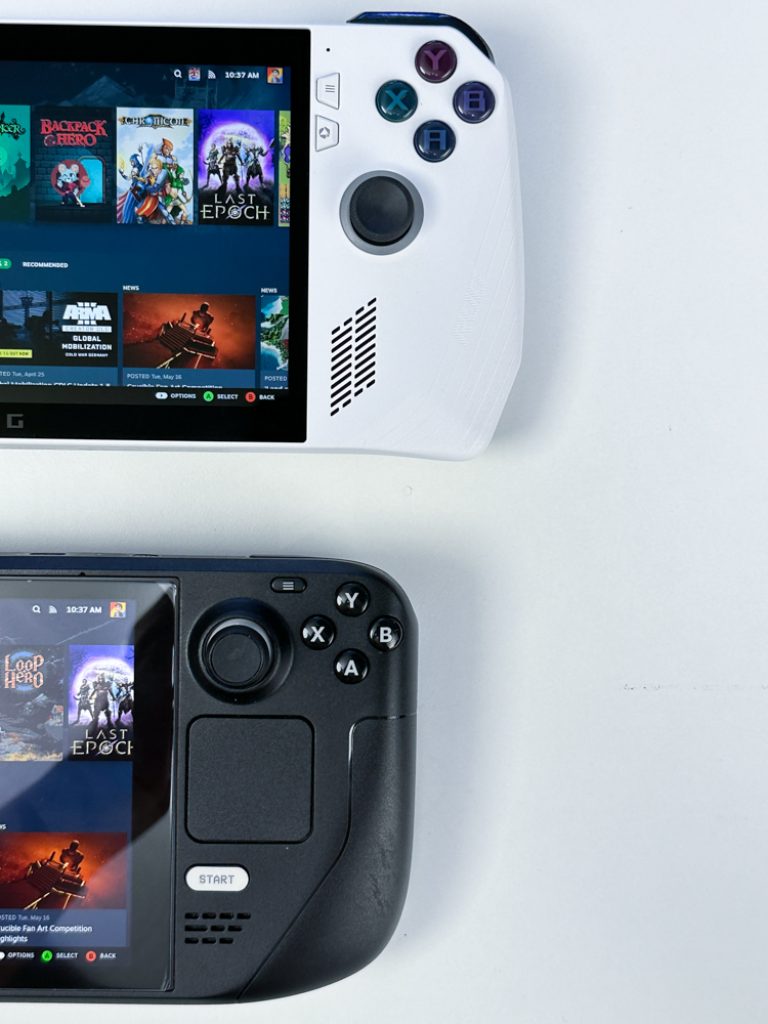
Both the ROG Ally and the Steam Deck come equipped with top-notch audio quality, making it hard to choose a favorite. The ROG Ally has a more balanced sound quality compared to the Steam Deck, which has more pronounced high frequency levels. I have to say that the ROG Ally is better in this department because it is much louder based on my initial decibel benchmark.
Control-wise, the Steam Deck has chunky grips akin to a console controller, with buttons suitably sized for the device. The ROG Ally, however, sports a flatter design. Although it might take a little getting used to, it’s pretty comfortable once you’ve adapted. Nevertheless, the back buttons on the ROG Ally are prone to accidental presses unlike the 4 rear buttons on the Steam Deck.
Button and Control Overview
I would say that the ROG Ally has a more visually appealing button design than the Steam Deck. However, the face buttons on the ROG Ally could use some improvement due to some reported button wobble. In contrast, the Steam Deck buttons seem more solid and does not make too much sound when pressed.
Gyro and Track Pad Features
The ROG Ally has gyro capabilities, but currently, this feature isn’t enabled yet at the time of writing this article. The Steam Deck, on the other hand, possesses built-in gyro capabilities that activate upon thumb contact. The Steam Deck also outshines the ROG Ally with its track pads, adding versatility for games not compatible with controllers. Overall, I would prefer the Steam Deck in terms of these additional control features.
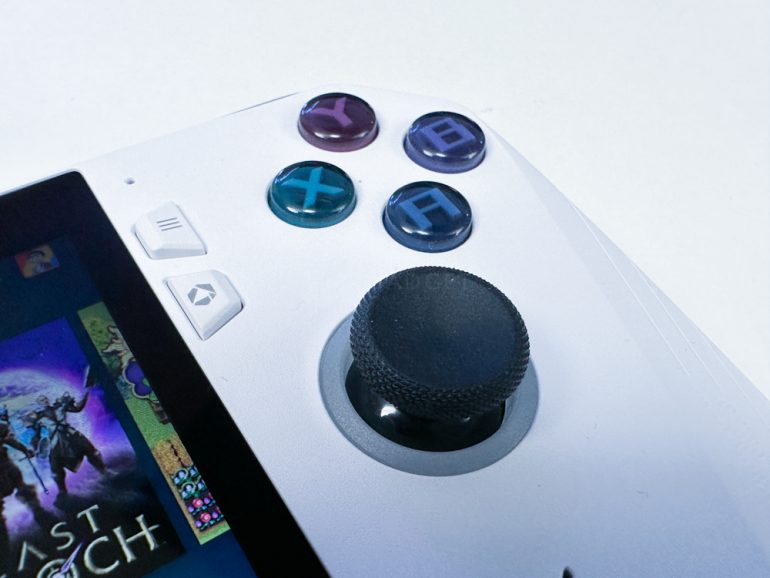
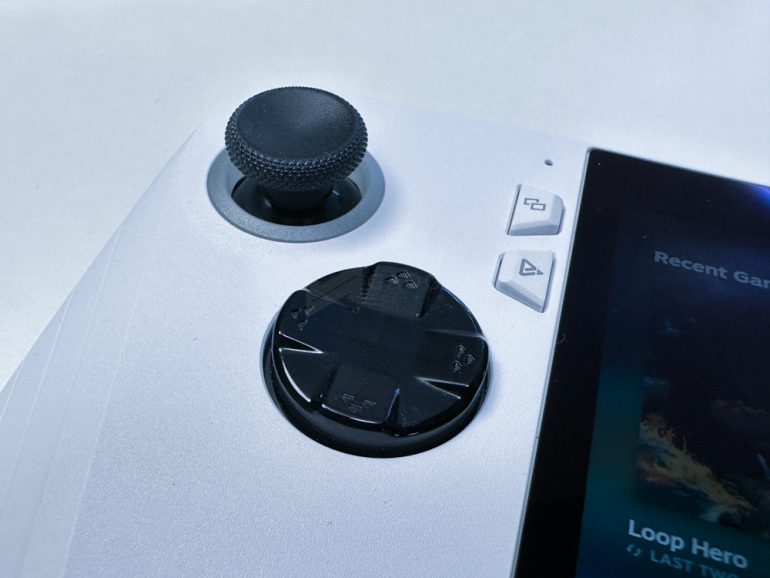
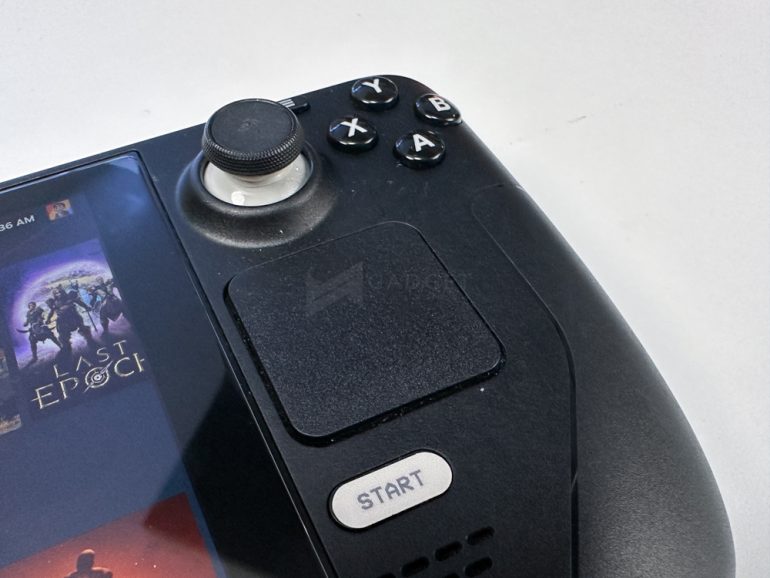
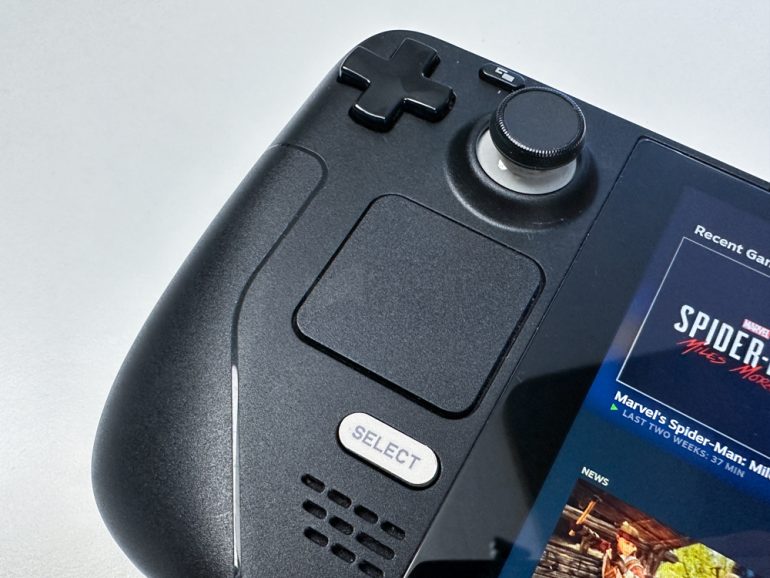
I/O Ports, Docking Capabilities and Software Experience
Both devices share similar I/O options. However, the absence of a USB-C port at the bottom, a common feature in many handheld PCs, makes docking these devices with external accessories a bit cumbersome. For instance, the AYANEO Air Pro sports two USB-C ports – one at the top and at the top – give more options for output and charging.
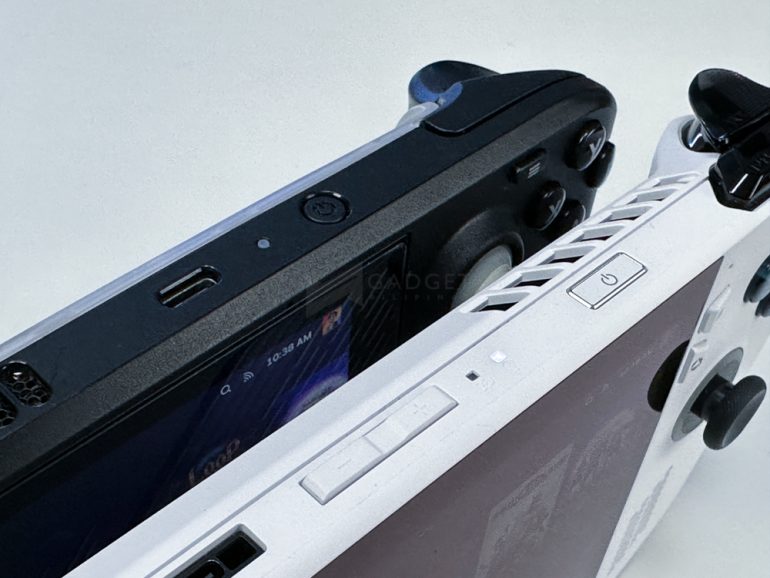
The Steam Deck uses SteamOS, a Linux-based operating system offering a console-like experience. Conversely, the ROG Ally runs on a Windows-based system, offering a laptop-like experience without a keyboard. Navigating through a Windows experience on a handheld can be frustrating without an external keyboard and mouse, an area where the Steam Deck excels with its console-like experience.
Software Stability and Battery Life
The Steam Deck, being older, has undergone many tweaks, leading to a more stable system. The ROG Ally, being newer, is still in development, leading to some software reliability issues. In terms of battery life and performance, the Steam Deck outperforms the Rog Ally. With the Rog Ally averaging about three and a half hours of battery life at the lowest settings, the Steam Deck manages to run for longer periods, marking it as a more power-efficient device.
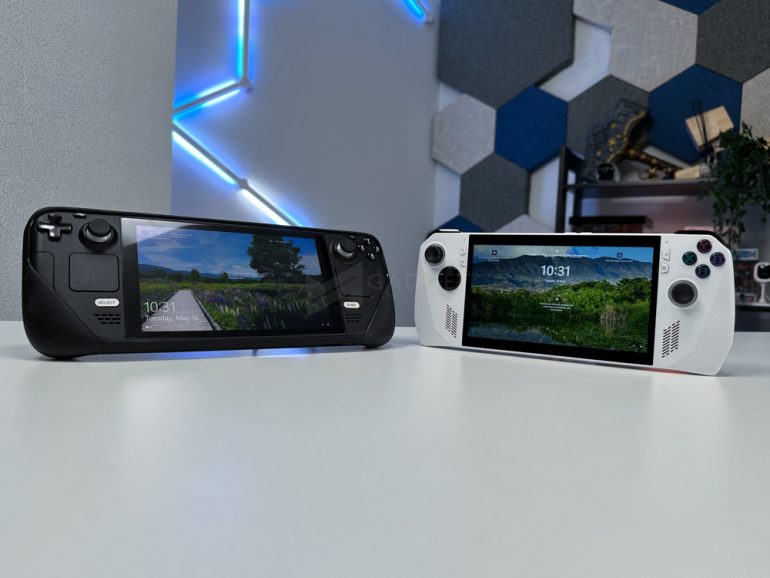
Performance in Gaming
Performance and Battery Life
Comparing performance and battery life directly, the Steam Deck maintains stable performance at 720p resolution with a 40 frames per second cap and low settings, drawing a total power of about 15 Watts. This offers approximately 2 hours and 45 minutes of battery life. The ROG Ally, on the other hand, provides superior performance with settings adjusted to 55 or 60 frames per second at 720p in low settings, albeit with reduced battery life.
However, it is obvious that the Steam Deck has a secret sauce up its sleeve because it still manages to perform impressively well especially at 15 TDP. Perhaps, you’ve seen videos from Retro Game Corps and ETA Prime about this, and I must say that they are absolutely right. The ROG Ally shines beyond 15TDP, and that’s where you’ll find more reason to consider getting it than the Steam Deck. However, if you already have a Steam Deck, you may want to hold on to it, and skip the ROG Ally unless you are into collecting handheld gaming devices or not particular in playing games that require higher TDP.
High Resolution and Frame Rate Performance
The ROG Ally stands out in its flexibility for performance optimization. It can increase resolution to 1080p from 720p for a much sharper and clearer picture, even at around 30 frames per second. With turbo mode, the ROG Ally can achieve about 40 frames per second at 1080p with low settings, though this significantly reduces battery life to approximately one hour.
Docked Gaming Experience
The docked gaming experience also differs between the two devices. The Steam Deck offers a console-like experience on a larger screen, with no to little noticeable performance improvement. However, the ROG Ally can automatically switch to turbo mode when docked, drawing a full 30 Watts Total Design Power (TDP) and significantly improving gaming performance.
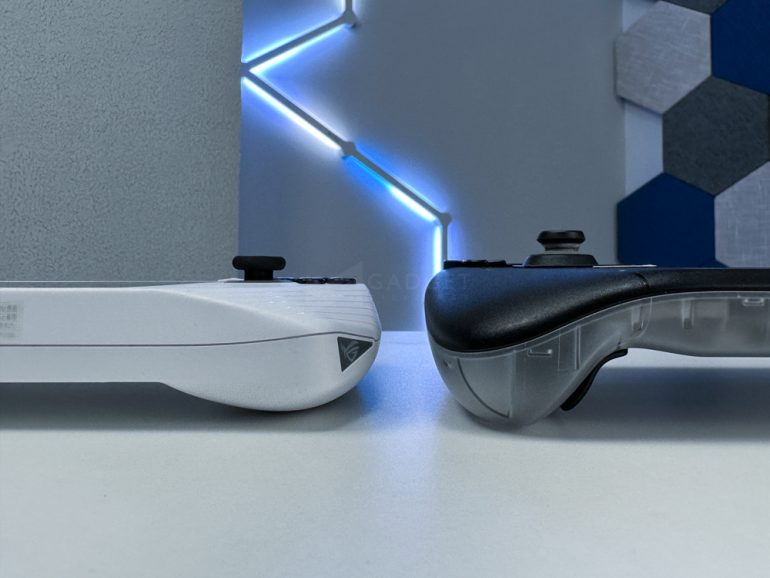
Playing at turbo docked mode can allow you to play at 4K at significantly better speed than the Steam Deck. There’s absolutely no contest here, and definitely a compelling reason to get the ROG Ally than the Steam Deck.
Graphics and Cooling System
An additional advantage of the ROG Ally is its ability to connect to the XG Mobile, an external Graphics Processing Unit (GPU) and power supply that serves as a dock. This significantly enhances the device’s graphical performance, making it a potential full desktop replacement. When it comes to cooling systems and fan noise, the ROG Ally, equipped with two fans, performs better and runs quieter than the Steam Deck, which has only one fan.
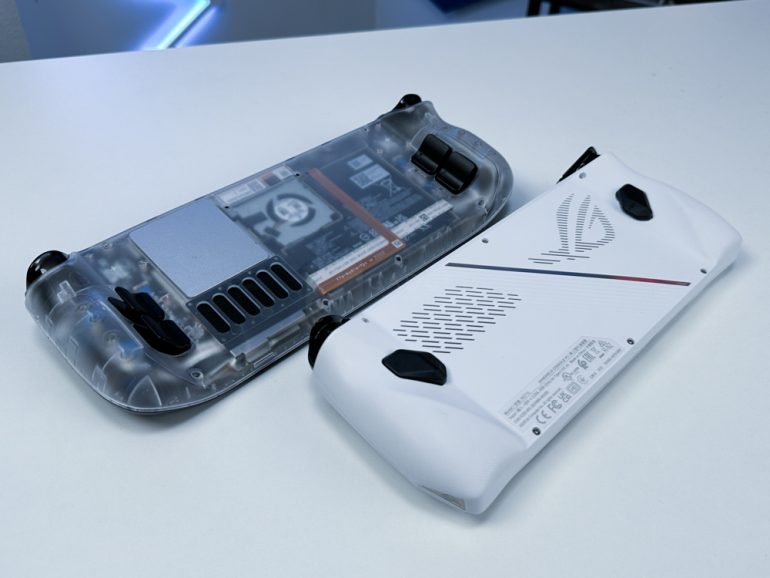
Heat Dispersion and Games Catalog
Both the ROG Ally and Steam Deck perform well in terms of heat dispersion, although the ROG Ally may feel slightly hotter due to a wider spread of the fingers on the back of the device. However, because the ROG has dual fan setup, the heat is managed very well thereby keeping the games running with little to zero issues.
In terms of the overall games catalog, the ROG Ally has an advantage, as it supports any Windows game. However, when I tried booting the device with a microSD card loaded with Batocera, the UEFI would not read the boot information from the SD Card.
In contrast, the Steam Deck is limited to Linux games or those playable through its Proton compatibility layers. The Steam Deck can be booted with various operating systems. I have tried booting Windows and Batocera, on top of the available Steam OS, and they work fine. When booting Windows, however, it would require to installed third-party applications that will provide smoother user experience.
Price, Availability, Repairability, and Longevity
The high spec ROG Ally model is priced at $699, while the lower spec model is at $599. The Steam Deck offers three models priced at $400, $530, and $650, with storage capacity being the main differentiator. Both devices are subject to regional variations and potential issues. In terms of repairability, neither device is particularly user-friendly, but the ROG Ally, due to its more traditional laptop-like design, might have an advantage in terms of component accessibility.
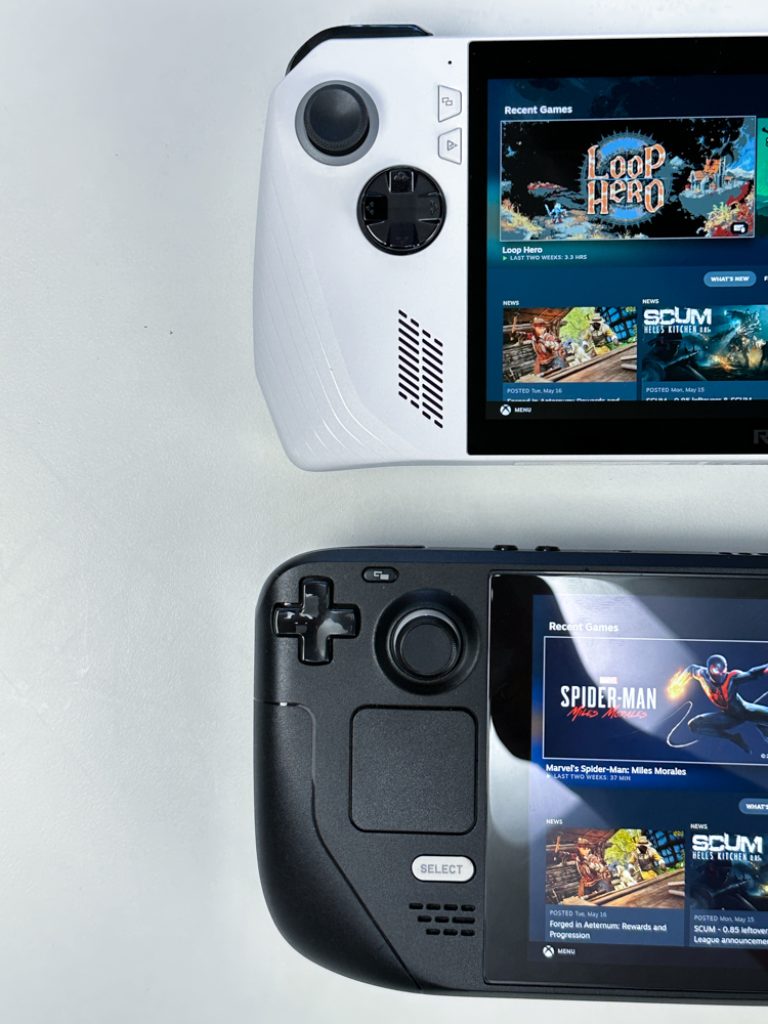
On the other hand, Valve, the maker of the Steam Deck, has made it clear that it supports the right to repair and will provide information and parts to help users repair their devices, which could be a big advantage for the Steam Deck in the long term. The ROG Ally, when it becomes available in the Philippines, is expected to have local manufacturer warranty and support. However, this remains to be known because ASUS Philippines has not yet told us anything specific to this.
As for longevity, the two devices are likely to age differently. The Steam Deck, with its Linux-based system and Valve’s backing, may have a longer software support life. In contrast, the ROG Ally, while it might age better in terms of hardware due to its more powerful specs, may fall behind in software updates as it relies on Windows and third-party game developers for support. Expect ASUS to also have product refreshes, depending on how fast AMD rolls out new APUs based on new CPU architecture and graphics technology.
In conclusion, the Steam Deck and ROG Ally offer different experiences for portable gaming. The Steam Deck offers a more console-like experience with a focus on solid performance and longer battery life, while the ROG Ally provides a higher-quality gaming experience with more flexibility in terms of performance settings, but at the cost of shorter battery life. The best device for a user depends on their individual gaming needs and preferences.
ASUS ROG Ally Pros and Cons
- Trumps the Steam Deck above 15 TDP (at the time of writing this review)
- Impressive Display Quality, including 120Hz refresh rate
- Relatively louder, and has more balanced sound quality
- Good thermal management
- Windows is not optimized for handheld
- Armoury Crate SE is buggy (at the time of writing this review)
- Drivers are not yet available to maximize APU performance
Valve Steam Deck Pros and Cons
- Better power management and performance at 15 TDP and below.
- Price to Performance Ratio King
- Third party accessories are widely available
- Community is established and growing
- Dated chipset
- Loud fans
- Slightly muted colors at default (can be adjusted via plugins)
Check out our full review of the ASUS ROG Ally very soon on this website and our YouTube Channel. Meanwhile, you may want to watch our Steam Deck related contents in the playlist below.
Giancarlo Viterbo is a Filipino Technology Journalist, blogger and Editor of gadgetpilipinas.net, He is also a Geek, Dad and a Husband. He knows a lot about washing the dishes, doing some errands and following instructions from his boss on his day job. Follow him on twitter: @gianviterbo and @gadgetpilipinas.






